|
LAKE ROOSEVELT The Story of the Columbia Basin Project |

|
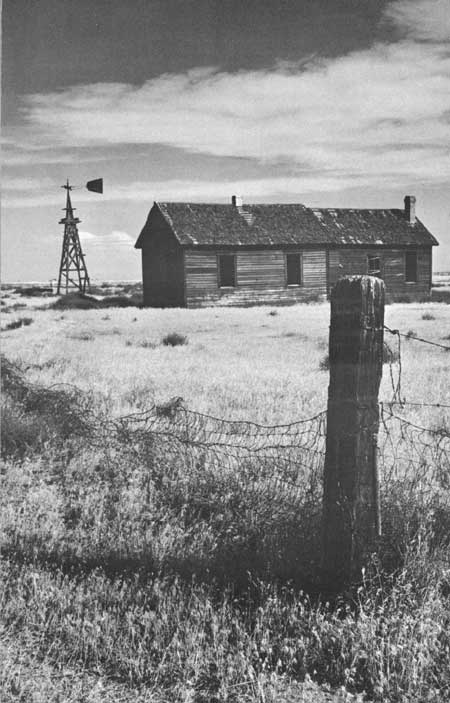
WHAT IT MEANS
When construction of Grand Coulee Dam started in 1933, the Columbia Basin was at its lowest ebb. One rancher, a longtime resident of the area, described it as "being known mostly for wheat, heat, and rattlesnakes."
In subsequent years, the Columbia Basin Project has turned this land of wheat, heat, and rattlesnakes into a substantial farming area and has provided huge amounts of power for the industries and homes of the Northwest. Foodstuffs and manufactured articles, products of the irrigation water and electric power of the project, go to every corner of the Nation and even to foreign countries.
To better understand just how much of a change there has been in the project area since the days when the construction of a giant dam to provide irrigation water for basin lands was not yet even a dream, you have to go back about 60 years in the history of the area. Until the rush of homesteaders began at the turn of the century, there had been few settlers in the basin and most of the land was used for grazing. Then the homesteaders came and established dryland farms, which for a short time provided them a living. The farmers had to rely on rainfall to grow their crops, but the rainfall often proved to be too scant and most of it came at the wrong time of the year. As they watched the crops wither and die, the farmers began to lose faith in the land that had seemed so promising. By 1910, the exodus out of the basin was growing and in the next 10 years the population dropped 10 percent. The 1920-30 decade saw a further drop of 30 percent as more of the settlers left, joined by townspeople who were forced to quit when business became almost nonexistent.
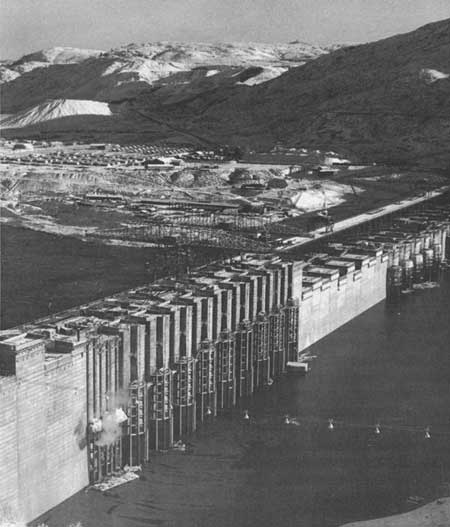
|
| A little over a year after this picture was taken in 1940 the first small station-service generators began producing power at Grand Coulee. |
Fields, once cleared of bunchgrass and sagebrush, became marginal rangeland as the sparse native growth took root in the drifted soil. Searing winds banged the doors of empty houses and turned rusty windmills that could find no water. A few ranchers stayed, gambling that their gaunt herds could find a living on the barren range, but they dared hope for little more than mere existence.
Then, on September 9, 1933, the first stakes were driven for Grand Coulee Dam. Towns were built to house the workers, and a transmission line was snaked across the rough land to bring power to the new towns. Roads and a railroad were built to haul workers and tons of materials. As the cities of Coulee Dam, Mason City, Lone Pine, and Grand Coulee, and at least a half dozen others took shape, workmen who were building the cities were joined by other workmen who would build the dam and operate the businesses, and paint and preach and cook and heal. When cities are born of sagebrush and scabland, they have need of many skills.
The start of construction in the area reversed the steady population decline. At first, the growth was concentrated only in the Grand Coulee area, but when construction of the irrigation system started after World War II, it began to spread southward. As major portions of the irrigation system were completed and construction workers moved on, their places were taken by settlers moving into the soon-to-be-irrigated farms, and by men who filled the towns to operate new and expanding businesses.
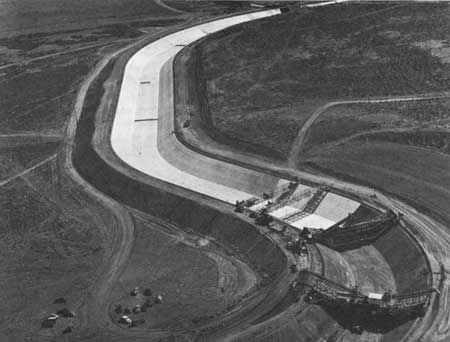
|
| Work on the irrigation system of the project got underway after World War II. Here, huge machines pave the Main Canal below Long Lake Reservoir. |
The construction boom created by the building of the irrigation system and the settling of farms began to affect the project area of Grant, Adams, and Franklin Counties in about 1950. By 1963, Grant County's population was 49,200, in contrast to 1930's population of 5,562. An increase in school enrollment and facilities went hand in hand with the zooming population. Where there were 2,255 pupils in the project area during the 1926-27 term, there were 21,767 pupils 36 years later. During the last 10 years, school enrollment has almost tripled, and the value of buildings and equipment has jumped from a modest $5 to $32 million. As school enrollment and population skyrocketed, other phases of living kept pace. The number of telephones in the project area has increased more than 1,000 percent in the last 20 years, and toll calls have increased almost 2,000 percent in the same time. Real estate and personal property tax receipts, which normally lag behind other growth, increased over 300 percent in the 1935-60 period.
Irrigation on the project got underway very modestly in 1948, when a total of 119 acres in Irrigation Block No. 1, just north of Pasco, received water from a pumping plant on the Columbia River. An 80-acre development farm established for experimental purposes by the Bureau of Reclamation near Moses Lake in 1948 was the only other project area under irrigation, with the exception of a few farms in the area that used wells for a source of irrigation water. Beginning with that first 1948 crop year and extending through 1963, farms of the Columbia Basin Project have produced crops worth about $342 million, and the total increases each year as more and more land is irrigated. During the first 15 years of irrigation, the average annual gross return per acre was almost $130.
The Columbia Basin Project area expanded its purchasing power, emerging as a new market hungry for everything from tractors to bobbypins. Created first by money from construction, this market shifted as the basin economy shifted until it is now based principally on an agricultural economy. Gross farm income from crops produced on the project was more than $57 million in 1963, and it will triple that figure as the project develops and more land is irrigated. In addition to the annual gross crop value, the wealth of the area has been enhanced by income from local plants which process farm products from the project. This industry, even younger than the farms of the area, is rapidly expanding to keep up with the growing demand for processed and packaged foodstuffs. And, as this processing industry grows, it increases the demand for even more of these farm products.
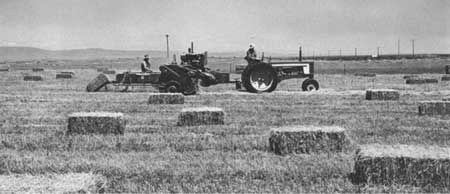
|
| Development of the project has meant an echoing development of services and institutions to meet the needs of a steadily increasing population. |
One of the largest processing plants in the project area is the Utah & Idaho sugar refinery near Moses Lake, where sugarbeets grown in the basin are processed. A byproduct of the refining process, beet pulp, is used as an excellent feed for project cattle.
There are three frozen-food plants located in the basin, one in Warden and two in Othello. Another, with facilities in Wenatchee, obtains 80 percent or more of its crops for processing from the project area.
Other types of processing plants are springing up as the area proves itself capable of producing a large variety of crops. There are processing plants which make starch from cull potatoes, plants which prepare peas and asparagus for freezing, and plants that package dry beans for shipment to Mexico and Central America. And there are other plants that sort, grade, pack, warehouse, and ship potatoes and onions.
Peppermint and spearmint oils are extracted from mint crops grown on the project and are shipped to chewing gum and candy manufacturers all over the Nation. Carrots, squash, cantaloups, sweetcorn, tomatoes, watermelons, lima bean, pumpkins, rutabagas, cabbages, and peppers from the area go to the fresh vegetable markets of nearby cities and towns. Project gladioli bulbs are shipped to many parts of the country. The area is well adapted to the production of seed, and it produces, processes, and ships certified seed peas and beans, red clover, Merion bluegrass, alfalfa, Lardino clover, stream bank grass, crested wheat grass, and vetch seeds. Alfalfa hay, one of the leading crops of the irrigated lands, finds a wide market beyond the Cascades on the dairy farms of western Washington. Each season sees more than 50 different crops growing on the project.
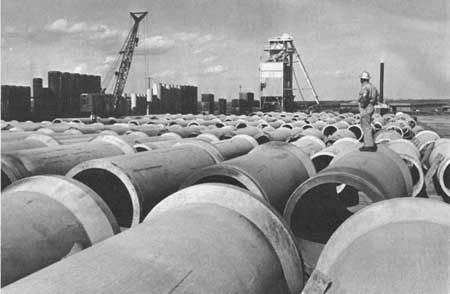
|
| With water available, the land has finally been able to realize its potential. |
Agricultural experts also predict a large growth in livestock production on the project and believe more and more land will be devoted to corn crops for livestock feeding. With the exception of 1956, each year since the first water came to the land the number of livestock within the project area at inventory time has increased appreciably. Between 1962 and 1963 the number of cattle on the project increased 22 percent, and the rapid growth of the Northwest has created a ready market for the meat produced in the feedlots of the Basin.
Land which offers a maximum amount of frost-free days, a necessity for fruit raising, is found in much of the project's irrigated area, and many land owners are putting part of their farm units into orchards.
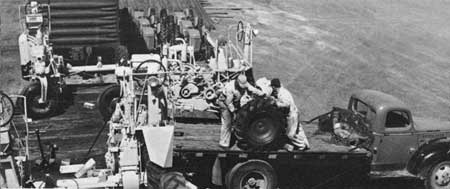
|
| The production of concrete pipe for use on the roads and farmers of the project is an example of an industry attracted to the area by the project's development. |
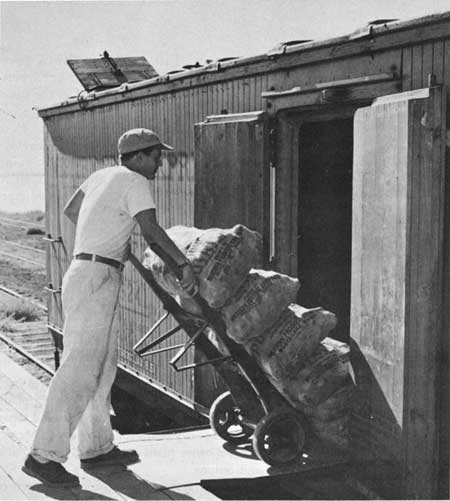
|
| The transportation, sale, and maintenance of farm machinery, manufactured in many States throughout the country, is big business in the Columbia Basin Project. |
In the years since the water first came down the canals to the land, the project's thirsty acres have proved that they needed only water and strong, willing hands to become a substantial agricultural area. Project farms have produced a great variety of crops with yields far above the average, and the addition of chemical nutrients and green manure crops to build up organic matter in the soil is continually making project land even more productive.
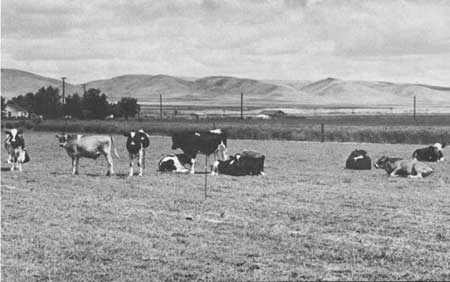
|
| Basin crops on their way to the markets of the Nation. |
In addition to boosting production of foodstuffs, the Columbia Basin Project has brought hydroelectric energy to a power-hungry section of the country, and the generators at Grand Coulee are helping the farmers to pay the cost of the development of project lands for irrigation. Without this revenue from power, development of the project on a reimbursable basis would not have been feasible.
The estimate as of January 1, 1964, of the total cost of the Columbia Basin project, including all construction work yet to be completed, is $969,562,000. Of this amount, approximately $685,000,000 is the cost of the irrigation portion of the project.
Under present repayment arrangements the money paid by the farmers of the project and power revenues from Grand Coulee Dam will amount to $907,529,000. Land sales to settlers will return an estimated $11,500,000 and the remaining $50,533,000 is nonreimbursable. Of this latter amount, $48,995,000 is allocated to flood control, $1 million to downstream navigation, and $177,000 for spillway floodlighting at Grand Coulee Dam. The remainder, $361,000, is contributions.

|
| Dairy production on the project has been steadily increasing as the settlers' farms develop and the needed capital becomes available. |
In addition to these repayments of cost and of operating expenses, the project will return to the U.S. Treasury approximately $81,750,000 in interest during the payout period on the power investment, which is presently estimated to be paid out by 1976. Through fiscal year 1964, $174,321,978 of this amount has already been returned to the Federal Treasury, $116,573,074 being applicable to the principal payment and $57,748,904 for interest.
The Columbia Basin Project is a business proposition. It was built, as thousands of other businesses are, on borrowed capital. Because of national interest and the Federal policy to encourage reclamation development, financing of the project was undertaken by the Federal Government. This financing was made available only after the proposal for building the project had undergone a searching study and was determined to have engineering feasibility and economic justification. Like other businesses which borrow capital, the project must repay the money borrowed from the Government.
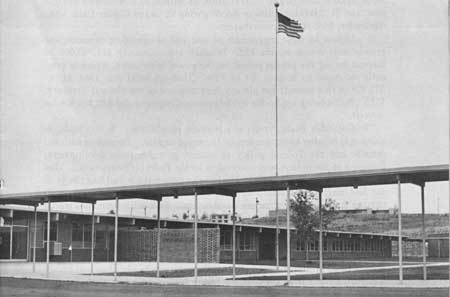
|
| The number of schools and the school enrollment have mushroomed in the project area. |
But the Columbia Basin Project is more than a good business investment for our Government and for the people of the Pacific Northwest. The housewife in Moline feels the effect of the project when her husband brings a paycheck home from the farm machinery factory where he works because of orders from the basin and the sales manager in South Bend, Ind., hums a happy tune as more lakes and more fishermen in the basin boost fishing tackle sales for his company.
And there are still more benefits from the project. Although during its early construction years there was definitely more tax money going into the project area in the form of Federal appropriations than was coming out, the picture has now changed. In addition to the cash return from water users and power revenues, there is also a new flow of revenue, represented by the vastly increased tax base. A conservative estimate places the Federal taxes paid on income in the basin at approximately $28 million in 1963. And this is less than one-third the amount that may be anticipated when the project is fully settled. The estimated State and local tax payments in the project area are more than $7 million.
Locally, regionally, and nationally the Columbia Basin Project is more than paying its way.
| <<< Previous | <<< Contents>>> | Next >>> |
columbia_basin/sec6.htm
Last Updated: 01-Feb-2008